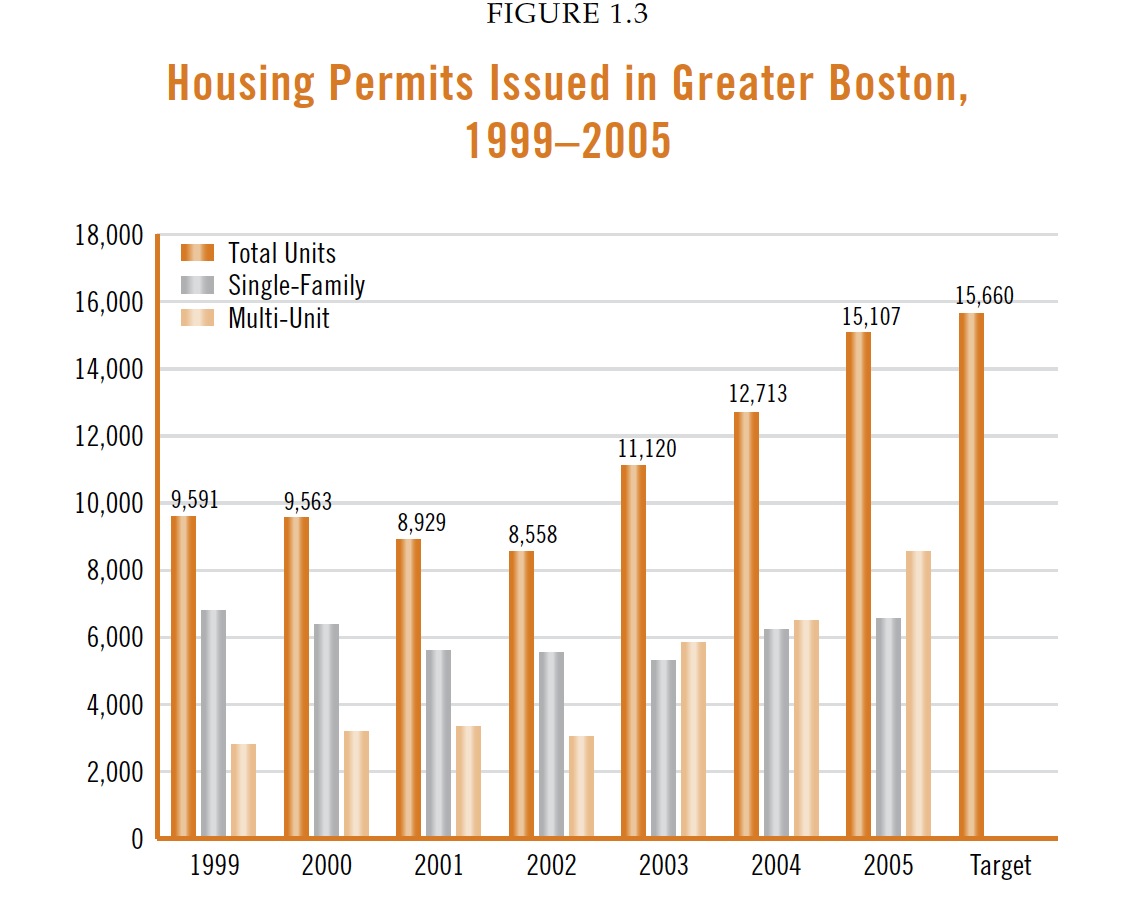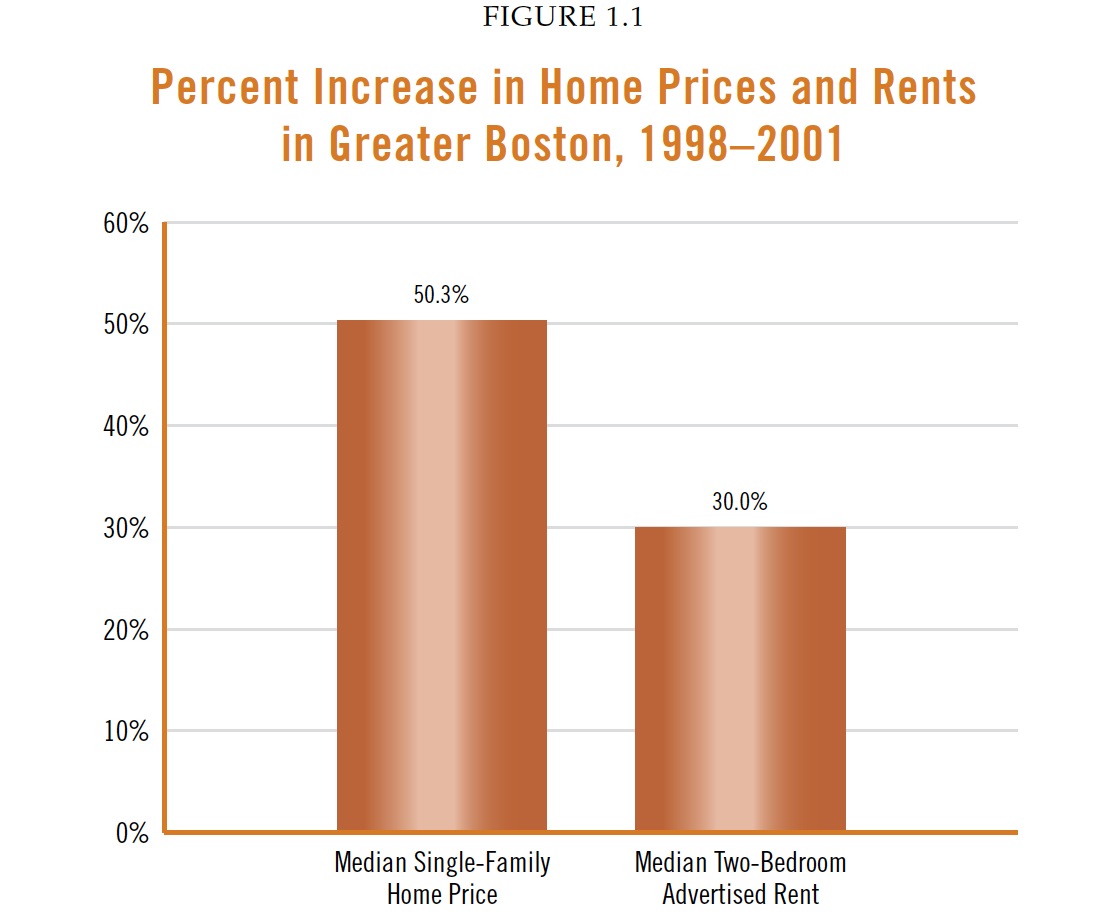DUKAKIS CENTER FOR URBAN AND REGIONAL POLICY
This report marks the 10th anniversary of the annual Greater Boston Housing Report Card. Each year since 2002, we have probed Greater Boston’s housing landscape, keeping tabs on housing construction, home prices and rents. We have analyzed the relationship between the region’s economy, demography and housing, and we have kept track of federal, state and local government policies that affect the region’s housing market. Year by year, we have reported on this vital sector of the region’s economy, based on the belief that providing decent housing for all at prices they can afford is not only a moral responsibility, but an economic necessity if the region is to retain its talent pool.
Housing Demand and Needed Supply, 2000-2011
In 2000, the New Paradigm study calculated the amount of additional housing supply that would have to be produced over the following five years if these huge price increases were to be avoided. To account for expected increases in the number of new households and to bring vacancy rates up to normal levels (i.e., 2% for single-family homes; 6% percent for rental units), a total of 36,000 additional housing units would be needed over and above the production levels prevailing at the time. To produce this much additional housing would require surmounting a number of social and political barriers, especially overly restrictive local zoning laws. It would also be necessary to find ways to deal with the economic barriers of extraordinarily high land acquisition costs, capital financing constraints and high construction charges.
The report called for universities and colleges to build more housing units for their students to alleviate student pressure on neighborhood housing markets. It called for private, for-profit developers to boost their production of market-rate and subsidized housing, taking advantage of the state’s Chapter 40B housing law to overcome local zoning restrictions and using various federal and state incentives for aggregating investment funds to underwrite land acquisition and construction costs. It called on local, state, and federal government agencies to engage in regulatory reform and to increase funding for subsidized housing. And it called on private business, church groups, labor unions and other civic institutions to help mitigate the housing crisis by contributing funds for the development of housing and by providing land for construction. The New Paradigm report issued a bold challenge to virtually everyone in Greater Boston. For all intents and purposes, however, that challenge was not met and housing prices continued to spiral upward through 2005.
In retrospect, we can now discern two distinct stages within the Greater Boston housing market. The first, beginning in the late 1990s and continuing through 2005, was marked by rapidly rising housing prices as housing production continued to lag behind housing demand and well behind the production targets outlined in the New Paradigm report. The only good news was that rents remained reasonably stable during this period. The second stage began in late 2005, and it has persisted until quite recently. It was marked by stagnating and then falling home prices, as well as rising foreclosures—but paradoxically escalating rents. The foreclosures themselves forced homeowners into the rental market while young families aspiring to become homeowners had to remain in rental housing because of tightened mortgage credit or fears of unstable housing prices. Under these conditions, rental demand quickly outstripped rental supply and rents reached their highest levels ever, despite a relatively weak underlying economy and falling home prices.
Download full report (PDF): The Greater Boston Housing Report Card 2012
About the Dukakis Center for Urban and Regional Policy
www.northeastern.edu/dukakiscenter
“The Dukakis Center conducts interdisciplinary research, in collaboration with civic leaders and scholars both within and beyond Northeastern University, to identify and implement real solutions to the critical challenges facing urban areas throughout Greater Boston, the Commonwealth, and the nation.
Founded in 1999 as the Center for Urban and Regional Policy or CURP, the Dukakis Center is equally committed to producing state-of-the-art applied research and to implementing effective policies and practices based on that research.”
Tags: Boston, Dukakis Center for Urban and Regional Policy, MA, Massachusetts, Northeastern University








 RSS Feed
RSS Feed